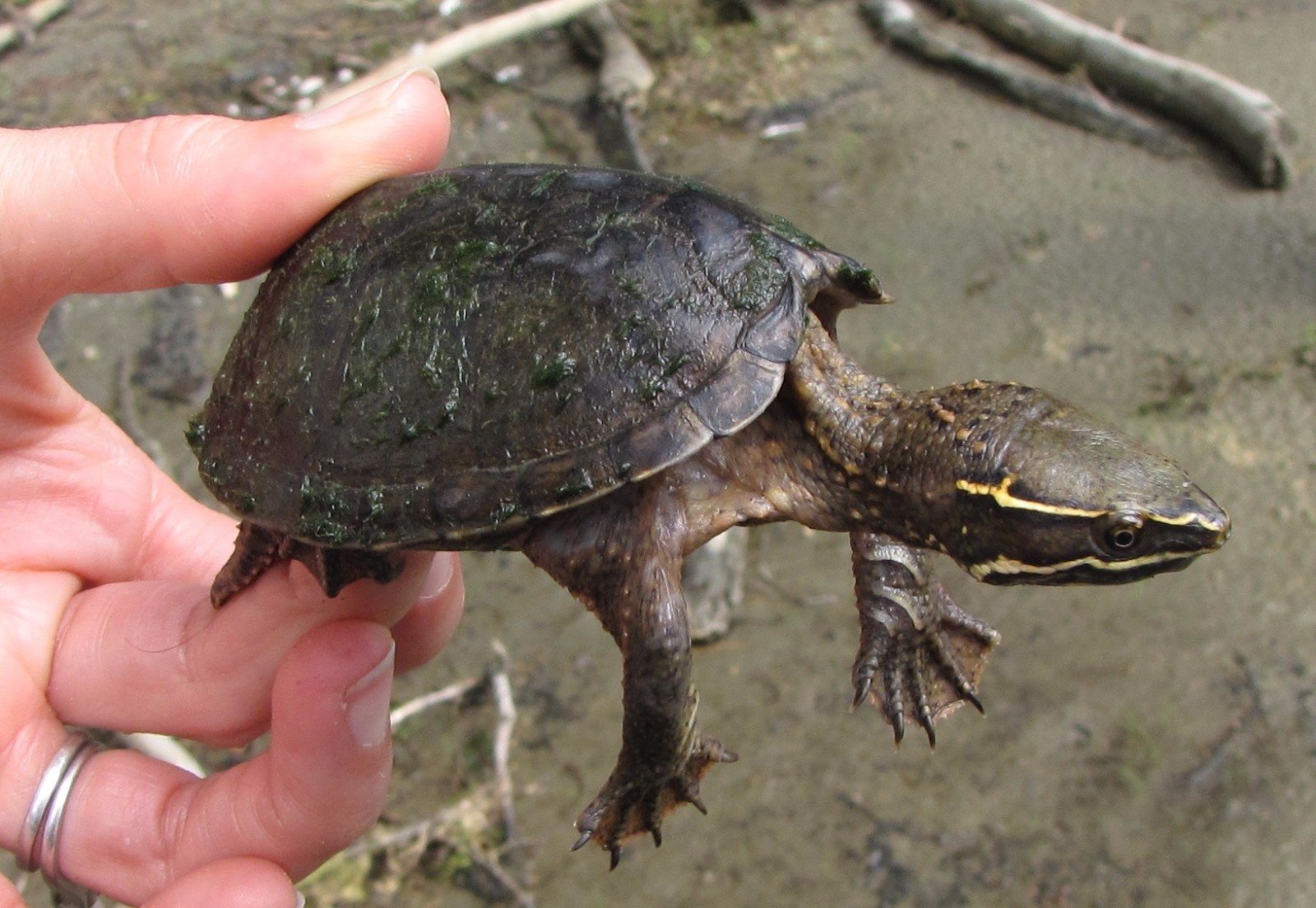
Musk turtles, also known as stinkpots, are fascinating reptiles that are often overlooked in the realm of popular pets. However, these diminutive creatures have a lot more to offer than meets the eye. With their unique behaviors, striking appearance, and interesting adaptations, musk turtles make for captivating companions for those who appreciate their charm.
In this article, we will explore 20 intriguing facts about musk turtles that will not only amaze you but also provide you with a deeper understanding of these remarkable creatures. From their ability to emit a pungent odor to their impressive swimming skills, there is more to musk turtles than their small size suggests. So, whether you are a turtle enthusiast, considering getting a musk turtle as a pet, or simply curious about these reptiles, this article will provide a comprehensive insight into the world of musk turtles.
Key Takeaways:
- Musk turtles are small reptiles with a unique musky odor, omnivorous diet, and the ability to live in both freshwater and brackish water habitats. They are popular as pets due to their small size and manageable care requirements.
- Musk turtles have fascinating adaptations, including a flattened shell for efficient swimming, strong jaws for crushing prey, and the ability to navigate back to their original habitat over long distances. They are solitary creatures and mostly active during the night.
Musk turtles are small reptiles native to North America.
These fascinating creatures can be found in various habitats, including freshwater lakes, ponds, and slow-moving rivers. They are known for their distinct musky odor, which is where their name comes from.
Musk turtles have a lifespan of up to 50 years.
These long-lived turtles can live for several decades if provided with proper care and a suitable environment. They have adapted well to survive in diverse ecosystems.
There are three species of musk turtles.
The three main species of musk turtles are the common musk turtle, the loggerhead musk turtle, and the flattened musk turtle. Each species has its own unique characteristics and can be found in different parts of North America.
Musk turtles have a flattened shell.
Unlike some other turtle species, musk turtles have a flat and streamlined shell that allows them to navigate easily through the water. This adaptation helps them swim quickly and efficiently.
Musk turtles are omnivorous.
These turtles have a diverse diet that includes both plant matter and small aquatic animals. They feed on insects, crustaceans, amphibians, and various types of vegetation.
Musk turtles have a unique reproductive strategy.
Female musk turtles have the ability to store sperm for an extended period of time, allowing them to lay multiple clutches of eggs without mating again. This adaptation ensures a higher chance of successful reproduction.
Musk turtles are known for their strong swimming abilities.
These turtles are agile swimmers and spend a significant amount of time in the water. Their webbed feet and streamlined bodies enable them to move swiftly and navigate through aquatic environments with ease.
Musk turtles have a small size.
On average, musk turtles only grow to be around 3 to 5 inches in length. Their small size makes them suitable for keeping as pets in captivity.
Musk turtles have a unique defense mechanism.
When threatened, musk turtles emit a strong odor from their glands, which acts as a deterrent to potential predators. This musky smell is distinct and has a foul scent.
Musk turtles have a basking behavior.
Like other turtles, musk turtles engage in basking behavior. They often sunbathe on rocks or logs near the water’s edge to regulate their body temperature and absorb UV rays.
Musk turtles are mostly active during the night.
These turtles are nocturnal, meaning they are most active during the night. They spend their days resting or hiding in submerged vegetation, and become more active in search of food once the sun goes down.
Musk turtles have a wide range of vocalizations.
While not as vocal as some other species, musk turtles can make various sounds, including hisses, squeaks, and grunts. These vocalizations are often used during courtship or as a form of communication.
Musk turtles possess strong jaws.
These turtles have powerful jaws and sharp beaks, allowing them to crush and consume their prey. Their diet consists of both hard-shelled organisms and soft-bodied creatures.
Musk turtles hibernate during winter months.
As cold-blooded reptiles, musk turtles enter a state of brumation during the colder months. They bury themselves in the mud at the bottom of bodies of water and become dormant until the weather warms up.
Musk turtles are excellent climbers.
Despite their affinity for water, musk turtles are equipped with strong claws and can climb onto logs, rocks, or other structures that are above the waterline. This ability comes in handy for various activities, such as basking or escaping predators.
Musk turtles are solitary creatures.
These turtles are generally solitary animals and prefer to spend their time alone. They only come together during the mating season, after which they go their separate ways.
Musk turtles have a remarkable ability to find their way back to their home range.
Even when relocated to unfamiliar areas, musk turtles have been observed to navigate back to their original habitat over long distances. This navigation skill is still not fully understood by scientists.
Musk turtles have a specialized sensory organ.
Located on the roof of their mouths, musk turtles possess a unique sensory organ called the Jacobson’s organ. This organ helps them detect chemical cues in their environment and plays a crucial role in finding food and potential mates.
Musk turtles can live in brackish water.
Unlike many other freshwater turtle species, musk turtles have the ability to tolerate brackish water conditions. This adaptability allows them to inhabit estuaries and coastal areas as well.
Musk turtles are popular as pets.
Due to their small size, unique appearance, and manageable care requirements, musk turtles are sought after as pets by reptile enthusiasts. However, it is crucial to provide them with a suitable environment and meet their specific needs to ensure their well-being.
Conclusion
In conclusion, Musk turtles are fascinating creatures that have captivated animal enthusiasts with their unique characteristics. From their distinctive appearance to their interesting behavior, these turtles have become popular pets and subjects of study. Musk turtles are adaptable and can thrive in various environments, making them a suitable choice for both experienced turtle keepers and beginners.With their small size and docile nature, Musk turtles are relatively low-maintenance pets. However, proper care and attention are still crucial to ensure their well-being. From providing a suitable habitat with access to both land and water to maintaining optimal water quality, responsible pet owners can help these turtles thrive in captivity.Whether you are considering keeping a Musk turtle as a pet or simply have an interest in learning about these delightful creatures, the 20 facts provided in this article offer valuable insights into the world of Musk turtles. So, dive in and discover the wonders of this fascinating species!
FAQs
1. What is the lifespan of a Musk turtle?
Musk turtles can live for over 50 years if provided with proper care and a suitable habitat.
2. Are Musk turtles suitable for beginners?
Yes, Musk turtles are suitable for beginners due to their small size and relatively low-maintenance requirements. However, proper research and preparation are essential before getting any pet.
3. Do Musk turtles require a specific diet?
Yes, Musk turtles primarily eat small aquatic animals such as insects, crustaceans, and small fish. It is important to provide them with a varied and balanced diet.
4. Can Musk turtles live in a smaller tank?
Musk turtles require a tank that is large enough for them to swim, dive, and bask comfortably. A minimum tank size of 20 gallons is recommended for a single Musk turtle.
5. Do Musk turtles need UVB lighting?
Yes, Musk turtles require access to UVB lighting to aid in Vitamin D synthesis and calcium absorption. This is crucial for their overall health and shell development.
6. How often should I clean the Musk turtle’s tank?
The tank should be cleaned regularly to maintain proper water quality. Partial water changes should be done every two weeks and a full tank cleaning should be done every month.
7. Can Musk turtles be kept with other turtle species?
It is generally not recommended to keep Musk turtles with other turtle species as they can become territorial, leading to aggression and stress.
8. Can Musk turtles live in outdoor ponds?
Yes, Musk turtles can be kept in outdoor ponds as long as the climate is suitable and adequate protection is provided against predators.
9. Are Musk turtles legal to own as pets?
Yes, Musk turtles are legal to own as pets in most places. However, it is important to check local regulations and ensure you are obtaining them from reputable sources.
10. How can I tell the gender of a Musk turtle?
Sexing Musk turtles can be challenging. Generally, female Musk turtles are larger in size compared to males, and males may have a longer and thicker tail compared to females.
Was this page helpful?
Our commitment to delivering trustworthy and engaging content is at the heart of what we do. Each fact on our site is contributed by real users like you, bringing a wealth of diverse insights and information. To ensure the highest standards of accuracy and reliability, our dedicated editors meticulously review each submission. This process guarantees that the facts we share are not only fascinating but also credible. Trust in our commitment to quality and authenticity as you explore and learn with us.


